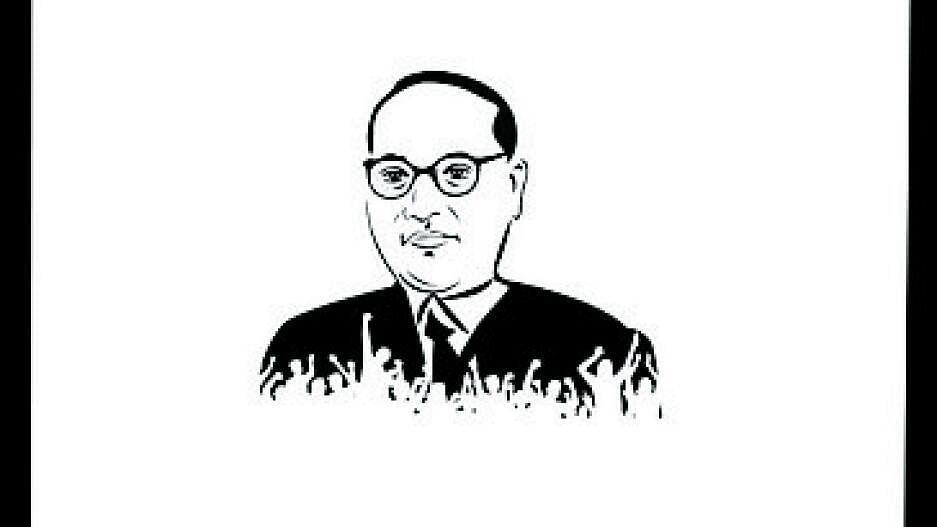
Credit: DH illustration
July 20 marks the centenary since B R Ambedkar’s call ‘Educate, agitate, organise’ was formalised. On July 20, 1924, he launched the Bahishkrit Hitakarini Sabha, an organisation for the welfare of the outcast communities. At the inauguration, Ambedkar spelt out this slogan, presenting three guidelines for the emancipation of the untouchables. His call has echoed for the next hundred years, decisively altering the lives of millions of Dalits in India.
In 1923, Ambedkar had just returned from England with a doctorate in science from the London School of Economics and a bar at law from Grey’s Inn. By then, he already held a PhD from Columbia University. He was at a crossroads: He had to work for a livelihood even as he longed to plunge into a larger battle for the cause of the untouchables. The options before him were to become a professor, advocate, or judge. He started a monthly, Mook Nayak, with a grant from Shahu Maharaj, taking up the cause of the depressed classes. He did a brief stint in teaching and advocacy, but felt he was cut out for a bigger role. He was waiting for the right moment to launch a movement against untouchability. The Gandhian reformist movement, which also sought to address the problem, did not impress him.
Around that time, Ramchandra More, a young man from Mahad in Maharashtra, met Ambedkar. More had suffered the pain of untouchability at school, and had fought for his rights. He had started mobilising his community. Thanks to his initiative, the untouchables established a hotel for the first time in Mahad, and it became a meeting point for Dalit activists. More and his friends contemplated a conference of the untouchables in Mahad and wanted to invite Ambedkar and felicitate him. They felt that the Ambedkar model of excellence in education would inspire the young generation of the community. Anand Teltumbde, in his brilliant study of the Mahad struggle, records these details, and this article draws historical details from his book Mahad: The Making of the First Dalit Revolt.
Ambedkar saw in More’s invitation the perfect moment to plunge into a larger battle. He sent his confidants to Mahad to oversee the conference arrangements. After meticulous preparation, the historic conference began on March 19, 1927. In his presidential address, Ambedkar elaborated on his three ideals: ‘Educate, agitate, organise’, not expanding on them.
The speech aimed to educate the audience about the tyranny of traditional India and how the untouchables should combat it. It reminded them of the vigour of the Mahar youth who served the British army. Ambedkar elaborated on the need for higher education among the Dalits. The community was organised for the first time in a massive way, as the second idea in the slogan, ‘organise’, was realised. Ambedkar and his companions marched towards the Chowdar tank, forbidden for untouchables. The age-old sanction was broken as the third idea, ‘agitate’, was launched. Ambedkar and his associates drank water from the tank. Later, a group of the participants were attacked by caste Hindus. At the insistence of Ambedkar, there was no retaliation.
In continuation of the conference, the Mahad satyagraha was organised between December 25 and 27, 1927, where pages of Manusmrithi, the rule book that promoted untouchability and the subjugation of women and shudras were burnt. Ambedkar addressed the women folk from the untouchable community in the first significant attempt to educate them.
The three ideas were translated into several Indian languages. The founding fathers of the Dalit Sangharsha Samithi (DSS) in Karnataka translated them as ‘Shikshana, sanghatane, horaata,’ rendering the verbs into nouns. A later generation returned to the verb form. In Hindi, they were translated as ‘Shikshit Bano, sangharsh karo, sanghatit raho’.
In the last hundred years, the dictum has echoed, resonated, and acquired fresh connotations. Dalit writers and the Dalit movement took up Ambedkar’s call to ‘educate’ in a massive way across India. Dalit poets like Namadeo Dhasal, Siddalingaiah, and others wrote hard-hitting poems about the suffering of the Dalit masses.
Non-Dalit progressive writers too carried the mission further. Dalit activists picked up Dalit metaphors for their graffiti, and the metaphors eventually turned out to be the proverbial ‘writing on the wall’! Siddalingaiah’s metaphor ‘The Dalits will arrive; make way for them’ was one such slogan rendered into several Indian languages. In Bengali, it read ‘Daliter aschin rasta daav; Daliter haathe raajya daav.’
On Ambedkar’s advice, Dalit boys and girls took to higher education on a massive scale. The call to ‘educate’ resulted in the establishment of educational institutions too. The first and second generations of educated Dalits founded prestigious institutions of learning with governmental support. Numerous Dalit organisations and individuals echoed and established the aspirations of the dictum.
Ambedkar’s later reflections hint that he would have added two more prompts to the original three. His attempts at forming the Republican Party of India intended to tell his people to ‘Capture power’. When Ambedkar embraced Buddhism and offered Dhamma Deeksha to thousands of his followers, he gave a call to ‘convert’ to Buddhism. These two later developments suggest that Ambedkar’s slogan could be extended to ‘Educate, agitate, organise, capture power, become a Buddhist.’
The centenary year of Babasaheb’s clarion call reminds us that several social movements in post-Independent India have followed Ambedkar’s dictum, albeit unwittingly. The slogans have formed the undercurrent of women’s, students’ and farmers’ movements, among others.
It is high time well-meaning people’s movements echoed Babasaheb’s dictum more explicitly. It could provide ideological unity for such movements, and broaden the scope of a historic slogan that altered the course of Indian history.
(The writer is a short story writer, playwright and cultural theorist).